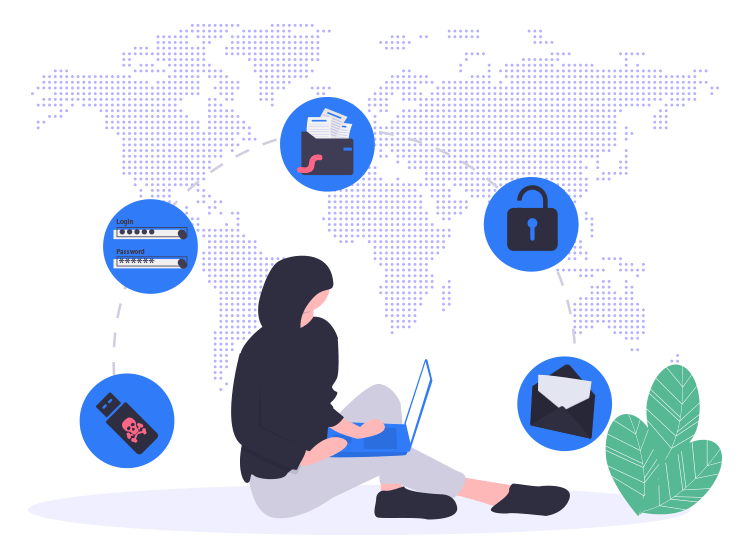
As the name suggests, identity theft is the act of acquiring personal, financial, or any other personal information about another person in an unauthorized and non-consensual manner. Let’s explore some identity theft protection measures, as well.
The main motive behind this crime is to pose as the targeted person and make transactions (purchases, hacking attempts) or tamper with the reputation and livelihood of the target.
According to the FBI, the identity theft issue is “America’s fastest growing crime.”
Identity thieves might use some generalised techniques such as looking through trash folders to find bank statements and acquire the information, or make phishing attacks to acquire potential information about people. They may also employ advanced methods to access corporate databases to steal customer information.
Once the information is in their hands, they can perform a lot of exploitation activities.
Types of Identity Theft:
- Child identity theft
- Medical identity theft
- Synthetic identity theft
- High-Tech identity theft
How does it happen?
The concept of identity theft is quite extensive and here are the 10 common ways in which it is usually executed:
- Data breaches – Unauthorized access of an organization’s data.
- Unsecure browsing – Visiting malicious websites unknowingly can either steal your data directly or by installing a malware.
- Dark web marketplaces – It’s a hidden network of sites inaccessible by normal browsers. Nefarious individuals access it via a special software.
- Malware activity – Installing malware onto the target system via a phishing scam, infected web link or malicious program to steal sensitive data from the target system.
- Credit card theft – This is another common way to obtain credit card information.
- Mail theft – Fishing through mail folders to access bank statements and reports.
- Phishing and spam attacks – Using phishing emails or texts, prompting users to reveal personal information.
- Mobile phone theft – One of the most common ways to gain access to a host of personal information.
- Wi-Fi hacking – Use of public Wi-Fi exposes your data to hackers.
- Card skimming – Use of skimming devices at ATMs or retail card swiping machines to steal card details.
Protection from identity theft incidents:
Here are some tips to protect your identity from getting stolen by scammers:
- Keep checking the personal documents for its details and accuracy.
- Use products and solutions provided by businesses or government organizations to mitigate effects of identity theft.
- Monitor public as well as private records like credit card statements to detect any discrepancies.
- Contact your bank in case of credit or debit card loss to block your card immediately.
- Set up fraud alerts to notify lenders if you do become targeted and your identity gets stolen.
- File a report with the Federal Trade Commission.
- Also, contact your local law enforcement agency to report the crime.

